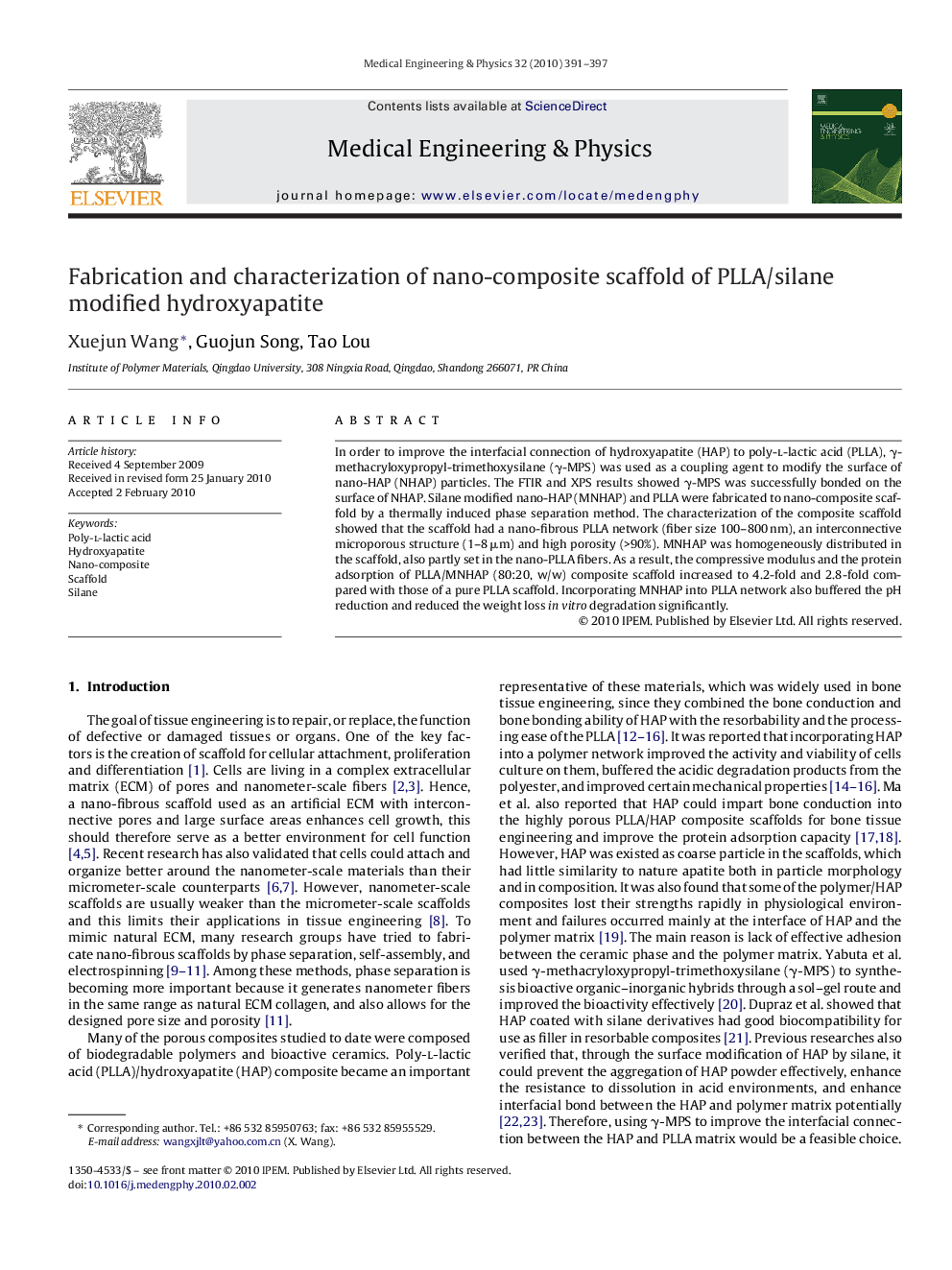| Article ID | Journal | Published Year | Pages | File Type |
|---|---|---|---|---|
| 876387 | Medical Engineering & Physics | 2010 | 7 Pages |
In order to improve the interfacial connection of hydroxyapatite (HAP) to poly-l-lactic acid (PLLA), γ-methacryloxypropyl-trimethoxysilane (γ-MPS) was used as a coupling agent to modify the surface of nano-HAP (NHAP) particles. The FTIR and XPS results showed γ-MPS was successfully bonded on the surface of NHAP. Silane modified nano-HAP (MNHAP) and PLLA were fabricated to nano-composite scaffold by a thermally induced phase separation method. The characterization of the composite scaffold showed that the scaffold had a nano-fibrous PLLA network (fiber size 100–800 nm), an interconnective microporous structure (1–8 μm) and high porosity (>90%). MNHAP was homogeneously distributed in the scaffold, also partly set in the nano-PLLA fibers. As a result, the compressive modulus and the protein adsorption of PLLA/MNHAP (80:20, w/w) composite scaffold increased to 4.2-fold and 2.8-fold compared with those of a pure PLLA scaffold. Incorporating MNHAP into PLLA network also buffered the pH reduction and reduced the weight loss in vitro degradation significantly.
